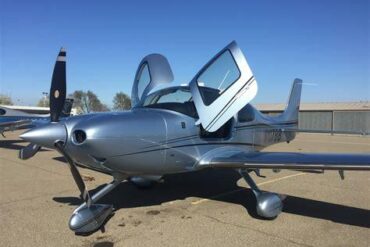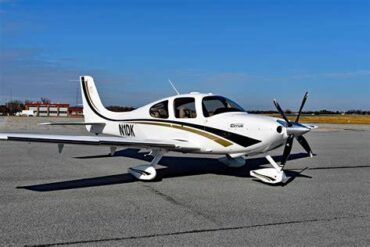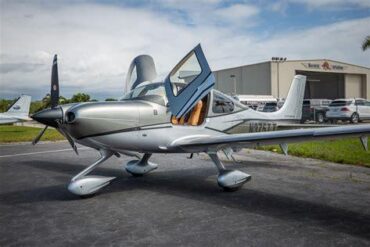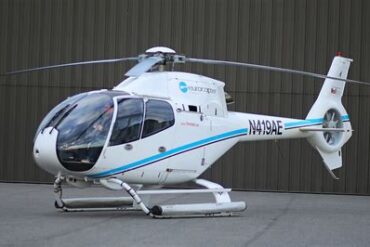The Cirrus SR20-G3 is a popular choice among private pilots and aviation enthusiasts for its sleek design, advanced avionics, and exceptional performance. Whether you’re a prospective buyer or simply curious about this aircraft, understanding the price and operating costs is crucial. In this comprehensive guide, we will explore every facet of the Cirrus SR20-G3, from its purchase price to ongoing operational expenses, providing you with a detailed financial overview.
Purchase Price of the Cirrus SR20-G3
The initial purchase price of the Cirrus SR20-G3 varies based on several factors, including the aircraft’s year of manufacture, total flight hours, and the condition of the airframe and avionics. As of 2024, the price range for a used Cirrus SR20-G3 is approximately $300,000 to $450,000. Newer models with fewer flight hours and updated avionics can command higher prices, while older models may be available at a lower cost.
Factors Influencing Purchase Price
-
Year of Manufacture: Newer models tend to have higher prices due to advancements in technology, improved safety features, and the overall condition of the aircraft.
-
Flight Hours: Aircraft with fewer total flight hours are generally more desirable and expensive, as they have undergone less wear and tear.
-
Avionics Package: The avionics suite installed on the aircraft significantly affects the price. Upgraded avionics, such as the Garmin Perspective system, can increase the value of the Cirrus SR20-G3.
-
Maintenance History: A well-documented maintenance history and recent overhauls can justify a higher asking price.
Financing and Depreciation Considerations
When purchasing a Cirrus SR20-G3, financing options are available through various lenders. Interest rates, loan terms, and down payments will vary depending on the buyer’s creditworthiness and the loan structure. Typically, lenders require a 20% to 30% down payment, with loan terms ranging from 10 to 20 years.
Depreciation is another critical factor to consider. Like all aircraft, the Cirrus SR20-G3 will depreciate over time. On average, owners can expect an annual depreciation rate of 5% to 10%. However, the rate of depreciation may be lower for well-maintained aircraft with desirable avionics and low flight hours.
Fixed Operating Costs
Once you own a Cirrus SR20-G3, several fixed operating costs must be budgeted for. These expenses remain relatively constant, regardless of how frequently the aircraft is flown.
Hangar Fees
One of the most significant fixed costs is hangar fees. Depending on your location, hangar fees can range from $300 to $1,500 per month. Larger airports with premium facilities typically charge higher fees, while smaller regional airports may offer more affordable options.
Insurance
Insurance is another essential fixed cost. The annual insurance premium for a Cirrus SR20-G3 typically falls between $5,000 and $10,000. The cost of insurance is influenced by factors such as the pilot’s experience, total flight hours, and the intended use of the aircraft (personal use, flight training, etc.).
Annual Inspection
The Federal Aviation Administration (FAA) requires all aircraft to undergo an annual inspection. For the Cirrus SR20-G3, the cost of this inspection can range from $2,000 to $4,000. The price varies depending on the complexity of the inspection, the labor rates at the maintenance facility, and any necessary repairs or replacements.
Subscription Services
Owners must also account for the cost of various subscription services, including navigation databases, charts, and weather services. These subscriptions are essential for safe and efficient flying and typically cost between $1,000 and $2,500 per year.
Variable Operating Costs
In addition to fixed costs, there are several variable operating costs associated with flying the Cirrus SR20-G3. These expenses fluctuate based on the number of flight hours logged each year.
Fuel Costs
Fuel is one of the most significant variable costs for any aircraft owner. The Cirrus SR20-G3 is powered by a Continental IO-360-ES engine, which consumes approximately 10 to 12 gallons of fuel per hour. As of 2024, the average price of 100LL aviation gasoline (avgas) is $6.50 per gallon, resulting in an hourly fuel cost of $65 to $78.
Maintenance and Repairs
Regular maintenance is crucial for ensuring the safety and longevity of the aircraft. Routine maintenance tasks include oil changes, spark plug replacements, and brake inspections. On average, owners should budget $2,500 to $5,000 annually for routine maintenance. However, unexpected repairs can arise, potentially increasing this cost.
Engine Overhaul
The Continental IO-360-ES engine in the Cirrus SR20-G3 has a recommended Time Between Overhaul (TBO) of 2,000 hours. An engine overhaul is a significant expense, with costs ranging from $25,000 to $40,000. Planning for this expense is essential, especially as the aircraft approaches the TBO.
Tires and Brakes
The condition of the aircraft’s tires and brakes must be regularly monitored. Depending on usage, tires may need to be replaced every 200 to 300 flight hours, while brake pads typically require replacement every 100 to 200 flight hours. The combined cost for tires and brakes ranges from $500 to $1,500 annually.
Landing Fees
Some airports charge landing fees, which vary depending on the airport’s location and facilities. These fees can range from $10 to $100 per landing. While some airports waive landing fees for aircraft based at their facilities, it’s essential to account for these costs when flying to different locations.
Resale Value and Market Trends
The resale value of the Cirrus SR20-G3 is influenced by the overall market demand for general aviation aircraft. Historically, the Cirrus SR20 series has retained its value relatively well, thanks to its modern design, advanced safety features, and popularity among private pilots.
Market Demand
Market demand for the Cirrus SR20-G3 remains strong, driven by its reputation as a reliable and versatile aircraft. The introduction of newer models, such as the Cirrus SR22, has also positively impacted the resale value of the SR20-G3, as buyers seek a balance between performance and cost.
Upgrades and Modifications
Owners can enhance the resale value of their Cirrus SR20-G3 by investing in upgrades and modifications. Popular upgrades include avionics enhancements, interior refurbishments, and paint jobs. These upgrades not only improve the aircraft’s aesthetics and functionality but also make it more attractive to potential buyers.
Conclusion
Owning a Cirrus SR20-G3 involves a variety of costs, from the initial purchase price to ongoing operating expenses. By understanding these costs and planning accordingly, owners can enjoy the benefits of this exceptional aircraft while managing their financial investment effectively. Whether you are a seasoned pilot or a first-time buyer, the Cirrus SR20-G3 offers a unique blend of performance, safety, and value that makes it a standout choice in the world of general aviation.


















